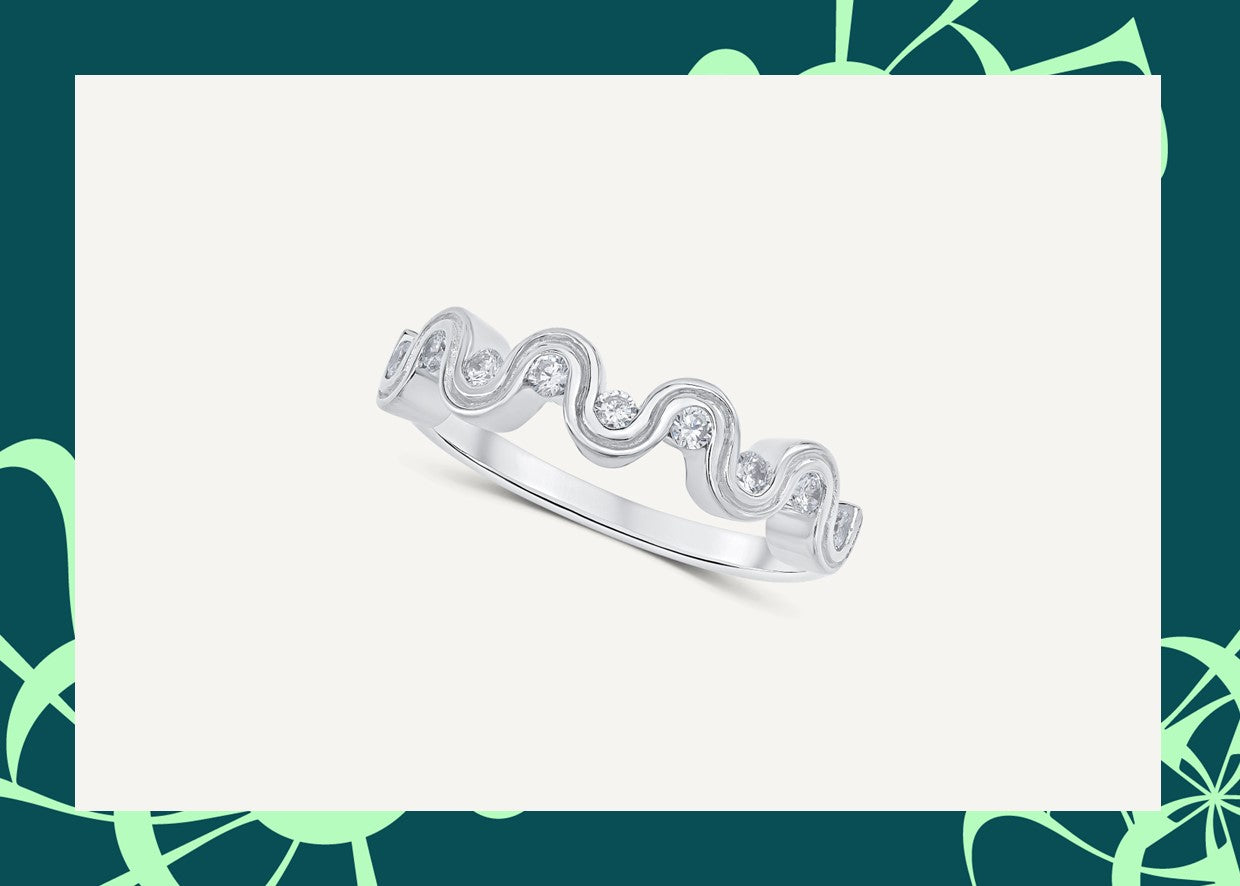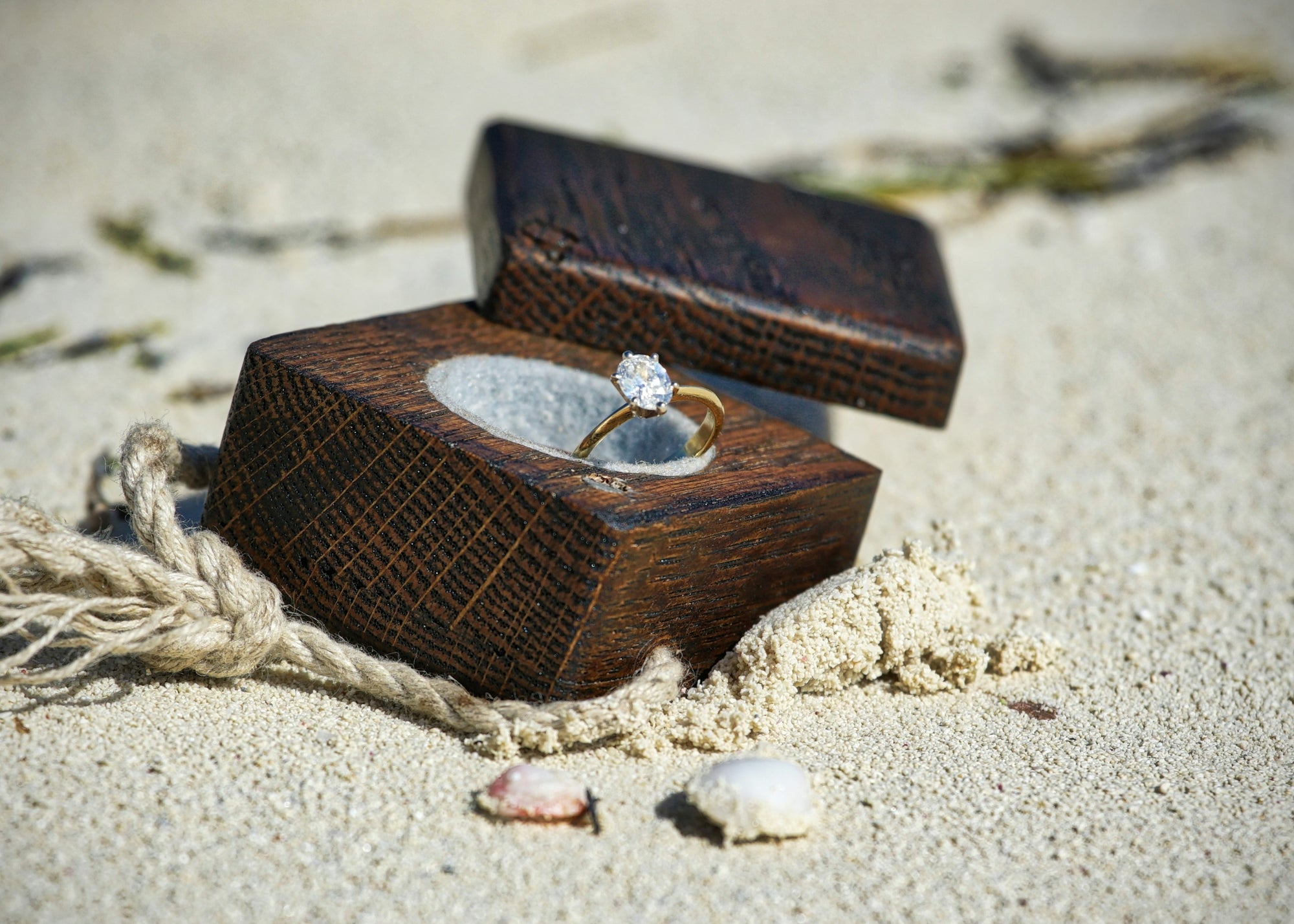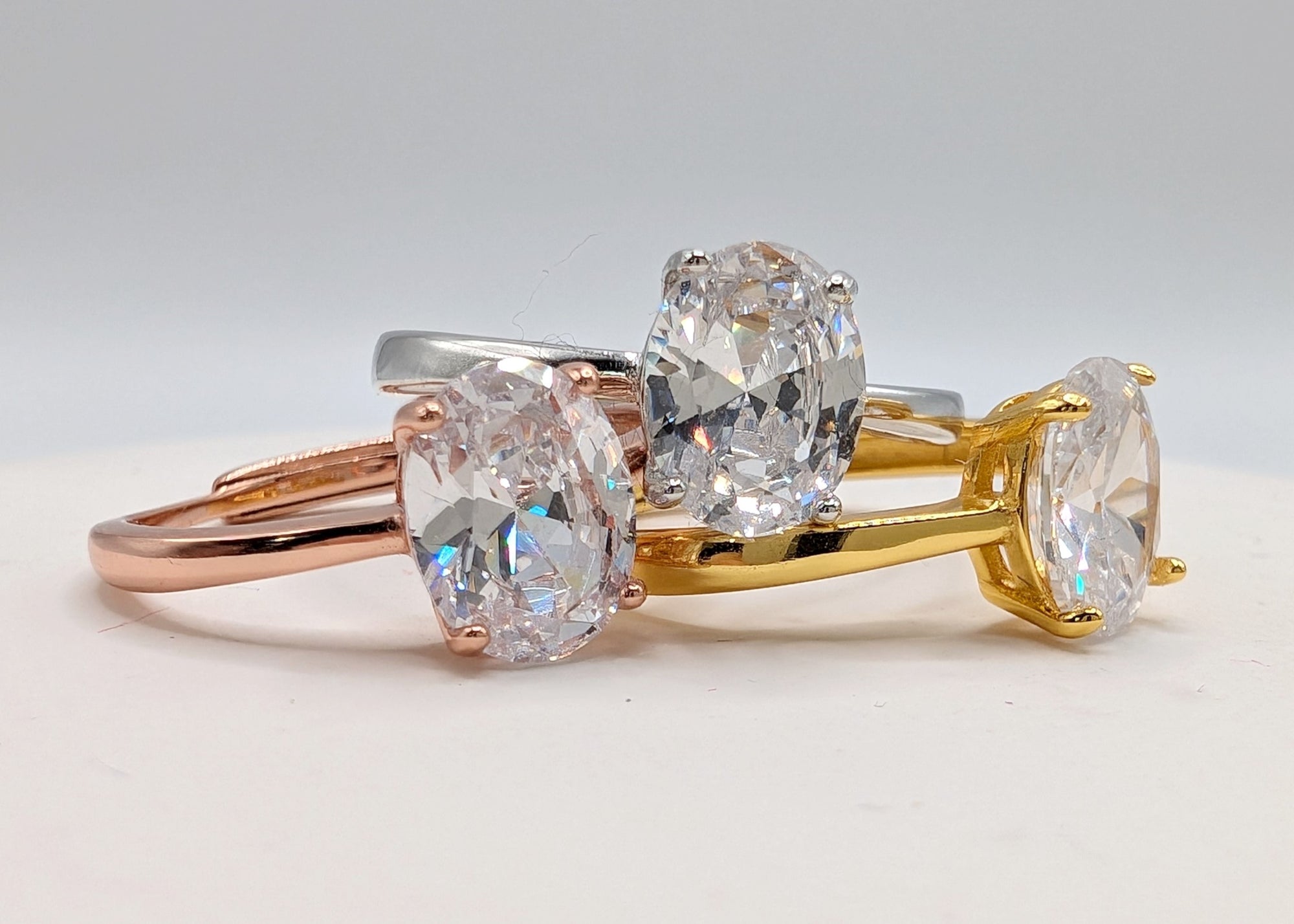Main Image: Platinum Voyage Eternity Ring by Jwllry by Jade
When choosing a precious metal for your engagement ring, white gold and platinum are two of the most popular options for a bright, silvery-white appearance. They may look similar, but these metals differ significantly in composition, durability, maintenance, and cost, making each suitable for different needs and lifestyles. Here, we'll explore these distinctions to help you make an informed choice.
At a Glance:
White Gold |
Platinum |
|
Composition |
Alloy of gold mixed with metals like palladium, silver, or nickel; plated with rhodium | Naturally white, typically 95% pure platinum, with no need for plating |
Colour |
Bright silvery-white when rhodium-plated; slightly yellowish when plating wears off | Naturally white with a soft, vintage patina over time |
Durability |
Durable but slightly softer; can thin with age, losing some metal when scratched | Exceptionally durable; metal shifts rather than wearing away when scratched |
Maintenance |
Requires re-plating every 1-3 years to maintain colour and shine | Minimal maintenance; only occasional polishing needed to maintain shine |
Hypoallergenic |
Can cause allergic reactions if nickel is present; less suitable for sensitive skin | Hypoallergenic due to high purity, ideal for those with sensitive skin |
Weight |
Lighter, making it comfortable for larger or daily wear pieces | Denser and heavier, giving a more substantial feel |
Cost |
Typically less expensive initially, but re-plating costs add up over time | Often more affordable in the long term due to minimal maintenance costs |
White Gold Oval Halo by Jodie Gearing
1. Composition and Colour
White Gold
White gold is an alloy, combining gold with metals like palladium, silver, or nickel to achieve a white hue. Pure gold is yellow, so alloying it with these metals helps create a lustrous, silvery finish. Typically, white gold is plated with rhodium to enhance its whiteness, giving it a bright, reflective shine. Over time, however, the rhodium plating can wear away, requiring periodic re-plating to maintain its appearance.
Platinum
Platinum is naturally white, with a purity of around 95% when used in jewellery. It doesn’t need plating to retain its colour, which is a significant advantage for those seeking low-maintenance jewellery. While platinum develops a natural patina over time, this soft frosted finish is often appreciated for its vintage charm, adding character without compromising its beauty.
2. Durability and Density
White Gold
White gold is a durable metal, though slightly softer than platinum. When scratched, white gold may lose a tiny amount of metal, but it is generally strong enough to retain fine details like engravings. It’s ideal for designs that require rigid detailing, as it holds shape well. However, white gold is more susceptible to thinning with age and may eventually require re-plating to maintain its lustre.
Platinum
Known for its density, platinum is exceptionally durable. Unlike white gold, when scratched, the metal shifts rather than wearing away, which helps maintain its thickness over time. This quality makes platinum an excellent choice for securing gemstones. The density of platinum adds weight, so jewellery made from this metal can feel more substantial. Platinum’s resilience makes it perfect for pieces meant to last a lifetime and be passed down through generations.
3. Maintenance and Care
White Gold
One of the main considerations with white gold is that it requires periodic rhodium plating to maintain its colour and shine, typically every 1-3 years. Without re-plating, white gold may show a slight yellow tint as the underlying gold alloy is exposed. This makes white gold a bit more maintenance-intensive than platinum, which could impact your decision if you prefer low-maintenance jewellery.
Platinum
Platinum’s natural white colour remains intact without plating, though it may develop a patina with regular wear. This patina is cherished by some as it gives platinum a unique, antique quality, and it’s easy to restore to its original shine with a quick polish. For those who want their jewellery to remain consistently white with minimal upkeep, platinum is an attractive choice.
4. Hypoallergenic Properties
White Gold
White gold can sometimes cause allergic reactions, especially if it contains nickel. Those with sensitive skin may experience irritation if the rhodium plating wears away. Opting for white gold with a high-palladium alloy, rather than nickel, can reduce the risk of allergies.
Platinum
Platinum is hypoallergenic due to its purity, making it a safer option for sensitive skin. Its minimal alloy content ensures that it is unlikely to cause irritation, making it ideal for those with known allergies to certain metals.
5. Weight and Cost
Weight
Platinum is denser than white gold, making it slightly heavier. This added weight can feel luxurious, but some may find it less comfortable, especially with larger rings. White gold, being lighter, is often preferred for bulkier designs or pieces meant for everyday wear.
Cost
Historically, platinum has been more expensive due to its rarity and density. However, fluctuations in the prices of gold and palladium (a key component in white gold alloys) have led to times where white gold rivals or even exceeds the cost of platinum. In recent years, platinum has often been the more affordable choice for a white metal. While white gold’s lower initial cost is appealing, the long-term costs of regular re-plating should be considered.
FAQs
Which is better, white gold or platinum?
The choice between white gold and platinum depends on your priorities for durability, maintenance, and cost. Platinum is more durable and hypoallergenic, while white gold offers a lighter feel and a bright, reflective finish with regular re-plating.
Can you visually tell the difference between white gold and platinum?
When freshly polished, white gold and platinum look very similar with a bright, silvery-white finish. Over time, however, platinum develops a soft patina, giving it a subtle antique look, while white gold may appear slightly yellow as the rhodium plating wears off.
Which is more expensive, gold or platinum?
Generally, platinum is more expensive than gold due to its density and rarity. However, recent fluctuations in precious metal markets have sometimes made white gold alloys, especially those containing palladium, comparable in price.
How much more expensive is platinum than white gold?
Historically, platinum has been 25-40% more expensive than white gold due to its density and rarity. The cost difference varies depending on current market conditions, so it’s always worth checking the latest pricing.









